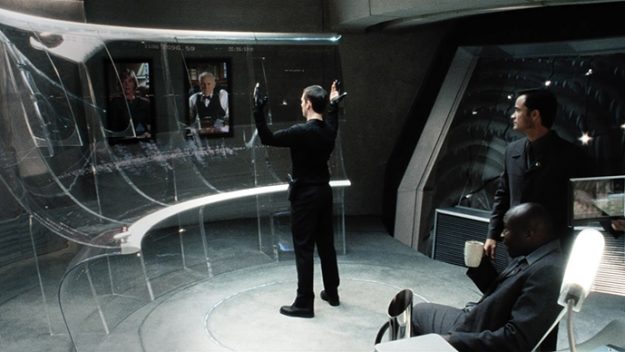Science fiction has a habit of turning into science fact. Usually, that’s because a good sci-fi writer has some level of scientific knowledge, or at least interest. They can look at where the world is now and extrapolate. That way, they end up with a pretty good guess that turns out to be true. You see this a lot in classic sci-fi novels, many of which prioritized the concepts over things like story and character. (I love Isaac Asimov and Arthur C. Clarke, but man is their early writing dry.)
Other times, fantasy becomes a reality despite the original work not having too firm a scientific basis. Someone had an idea, they put it on paper or film, and it ended up happening. You see this a lot in movies and TV, even when that work’s use of technology is basically a stand-in for magic. Usually, that happens because whoever write the thing thought the idea was cool. Then, somebody else with knowledge, money or both saw it and agreed that it was cool. So, they threw everything they had at it and figured out a way to make it happen. We’re going to guess that’s what happened with most of these movies that inspired real tech.
Star Trek: The Motion Picture: Smartwatches
Star Trek already predicted a future where we’d carry around the means to communicate with each other in our pocket. The show even predicted the flip-open designs we all had in the early 2000s. Don’t lie, you fliped that thing open like Kirk more than once. So it shouldn’t be a surprise that a couple of short decades later, those functions would be contained in a watch. Star Trek: The Motion Picture had the crew of the Enterprise swap out their handheld communicators for Snazzy wrist versions. Just like we’ve done with products like the Apple Watch, Samsung Gear, Pixel Watch, etc. Turns out we like the idea of talking to our wrist. Yes, I guess the idea was popularized by Dick Tracy comics long before this, but we’re talking about movies here. Besides, when the technology first came out, you probably weren’t thinking of an old-timey detective comic strip. You wanted to be a Starfleet captain.
Total Recall: Self-Driving Cars
The technology is here, and just around the corner from widespread release. In the 1990 Arnold Schwarzenegger sci-fi/action flick, Douglas Quaid hops into a Johnny Cab, which offered to drive him wherever he wanted to go. That’s exactly what Lyft and Uber intend to do. Once the technology is tested enough, they’ll add autonomous taxis to their fleet. Car companies like Ford and Chevy are also preparing for a future where people don’t buy cars, instead relying on automated taxi services to get them where they’re going. They may not have a creepy-looking dummy in the driver’s seat, but a robot will still drive you around. Also in the movie, Quaid meets a real human cab driver who says he needs to feed his family, unlike the Johnny cabs. So the movie also predicted the horrific jobs crisis this tech would bring too.
2001: A Space Odyssey: Video Calls, Tablets, and Digital Assistants
Watching this movie now, it’s wild that it came out in 1968. We may not be casually sending manned space missions to Jupiter yet, but it got a few things right about our modern world. I guess that’s what happens when you work with Arthur C. Clarke. You might argue that video calling was something everyone could have predicted. Phones had been around for a while, and television had become a mainstay in American homes. It would only be a matter of time before we combined the two somehow. In the movie, Dr. Heywood Floyd makes a call to his daughter in a video phone booth. Though they use smartphones to do the job, that is exactly how parents talk to their kids when they’re away on business now.
Though the movie failed to predict smartphones, it did have everyone reading and working on tablets. In the same scene where Dr. Floyd makes a video call, he passes by a table full of people, each with their noses buried in tablets. Whether they’re reading, looking over important documents or just messing around, that’s a common site at any airport these days. Stanley Kubrick and Clarke had an idea for how people might read and interact in the future. Tech companies looked at that and said, “actually, yeah, let’s make that.”
The same can definitely be said for HAL, the artificial intelligence the astronauts rely on to run different aspects of the ship. The way the humans interact with it, and the way it talks back definitely reminds us of Siri, Google Assistant, Alexa and sure, Cortana too. There’s no way you can tell me those weren’t based at least in part on HAL. The only difference is, none of them will try to kill you. Probably.


Leave a Reply